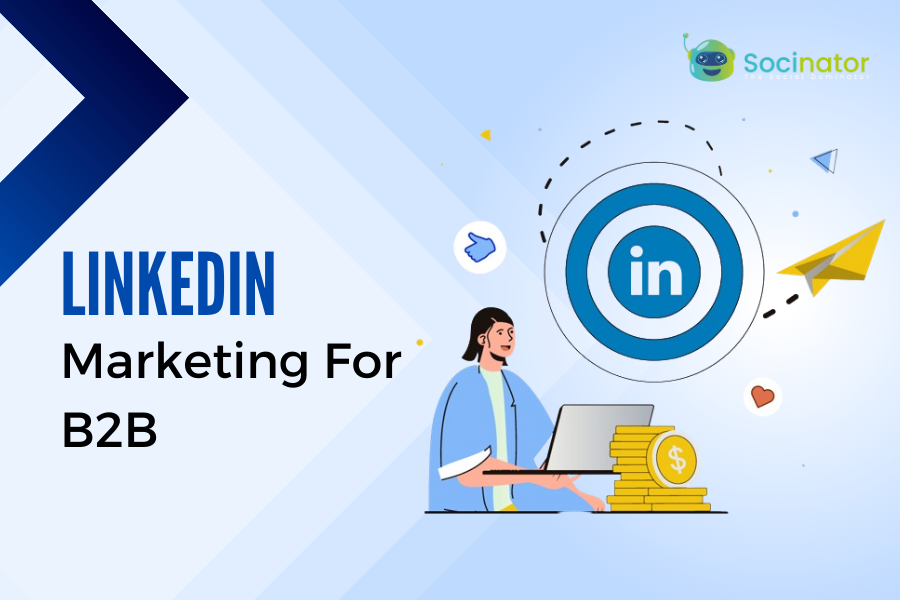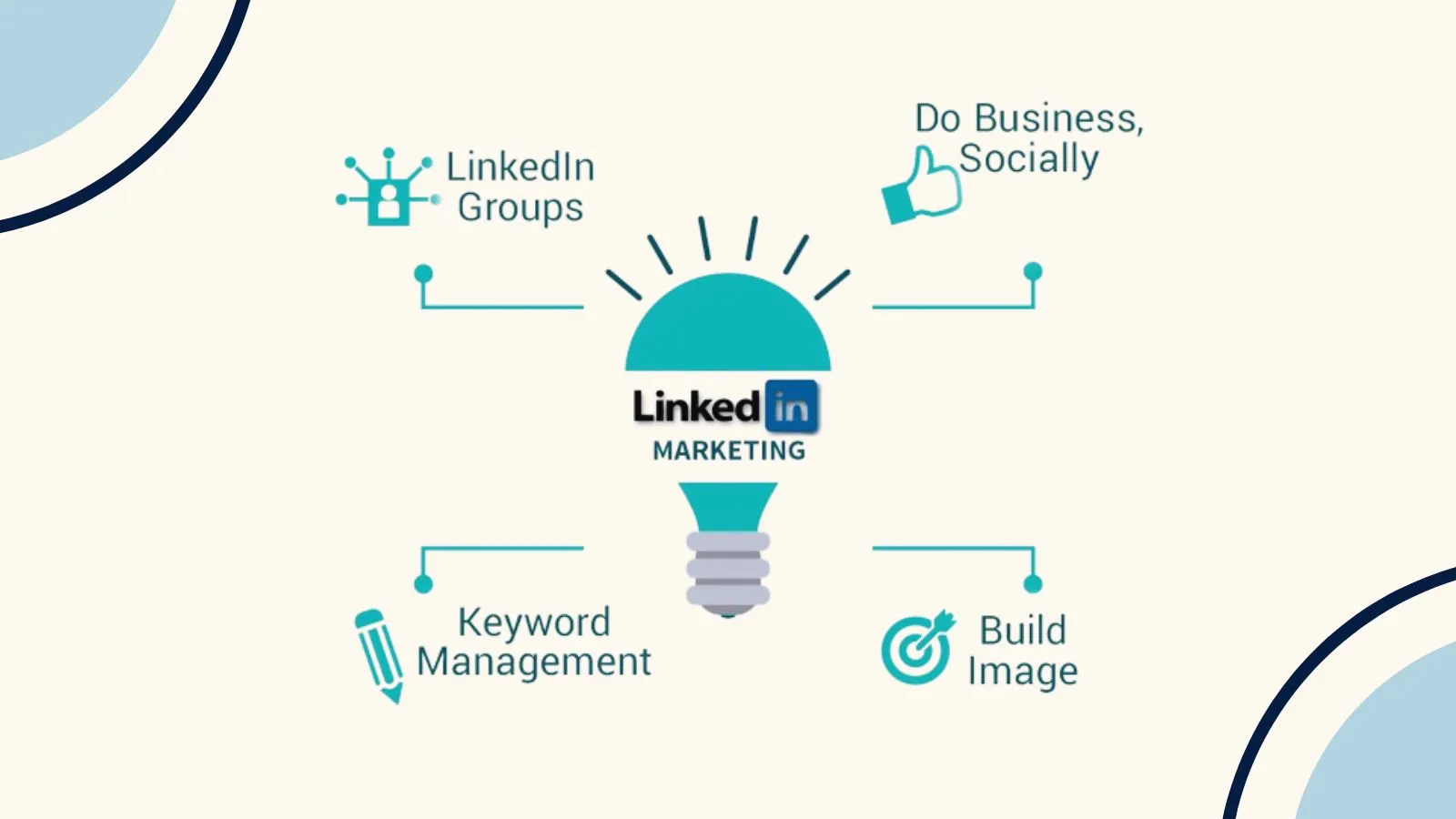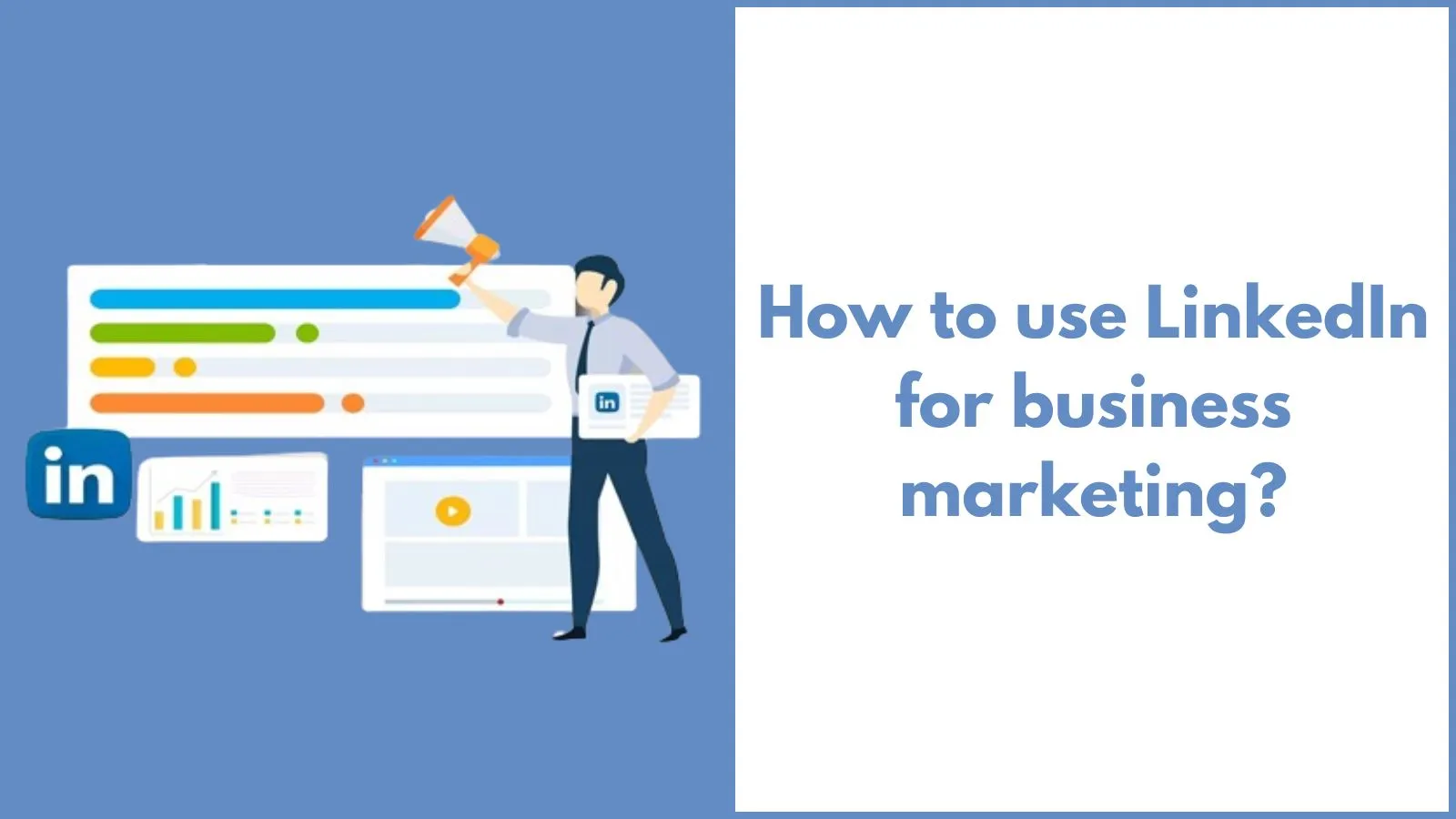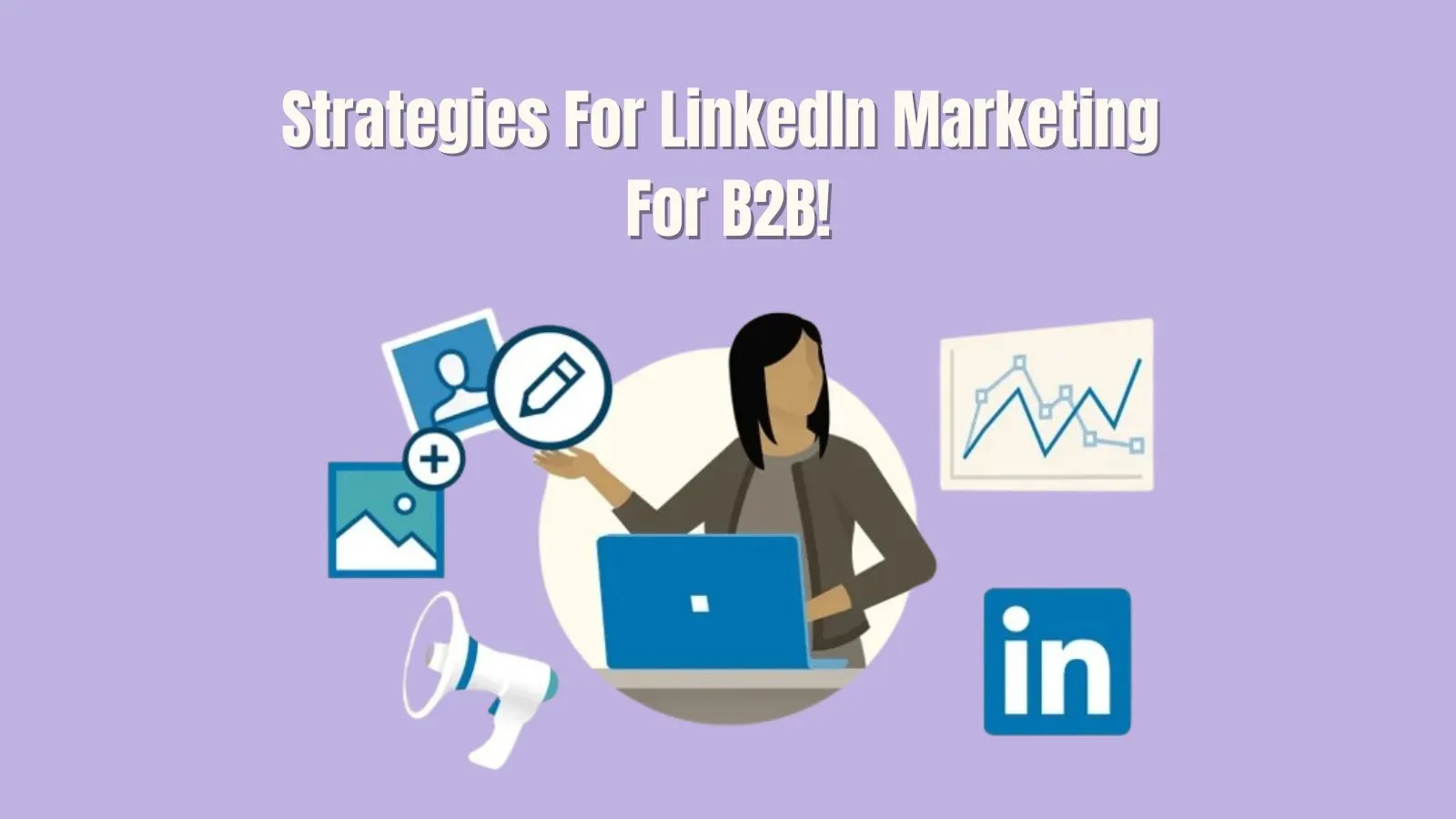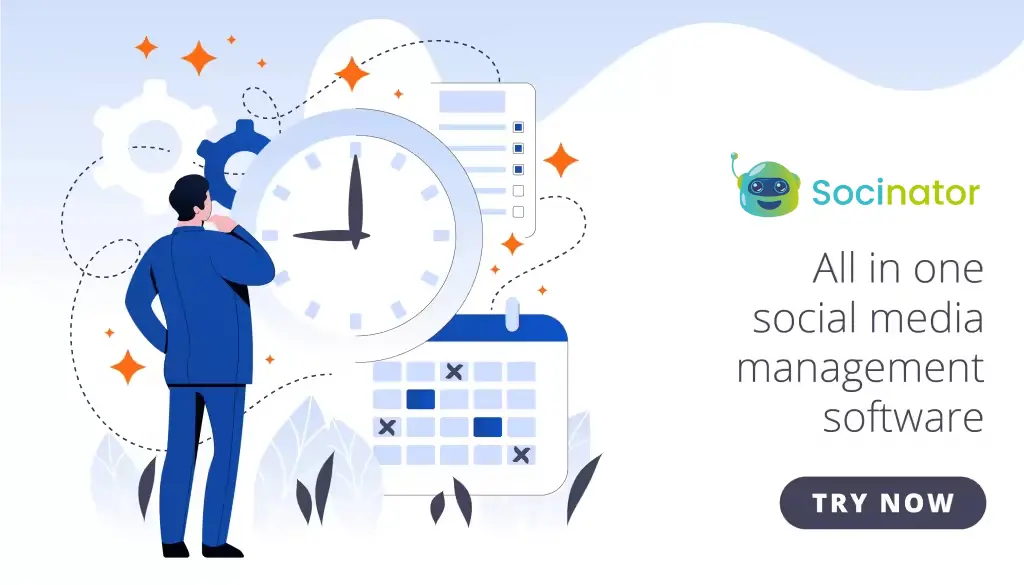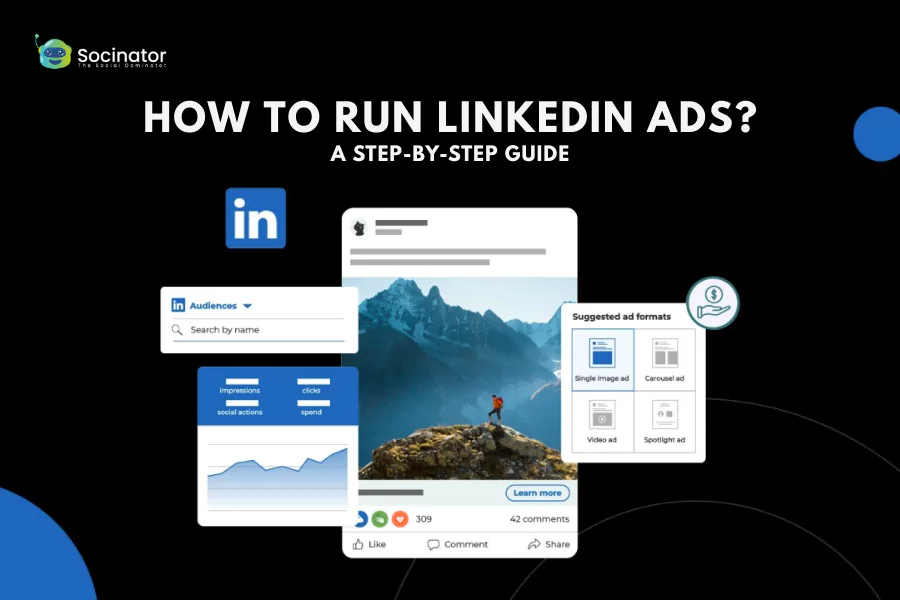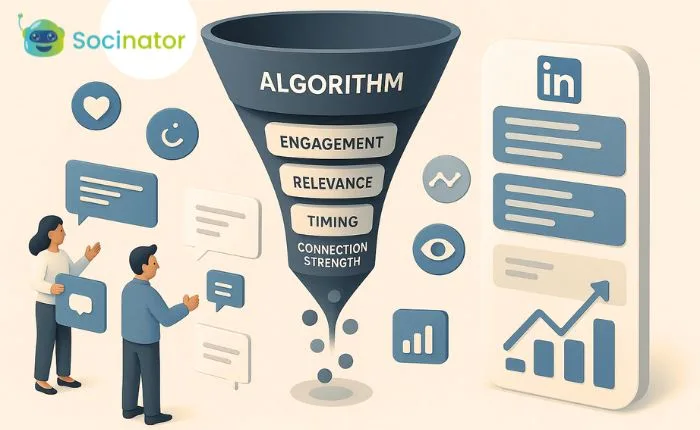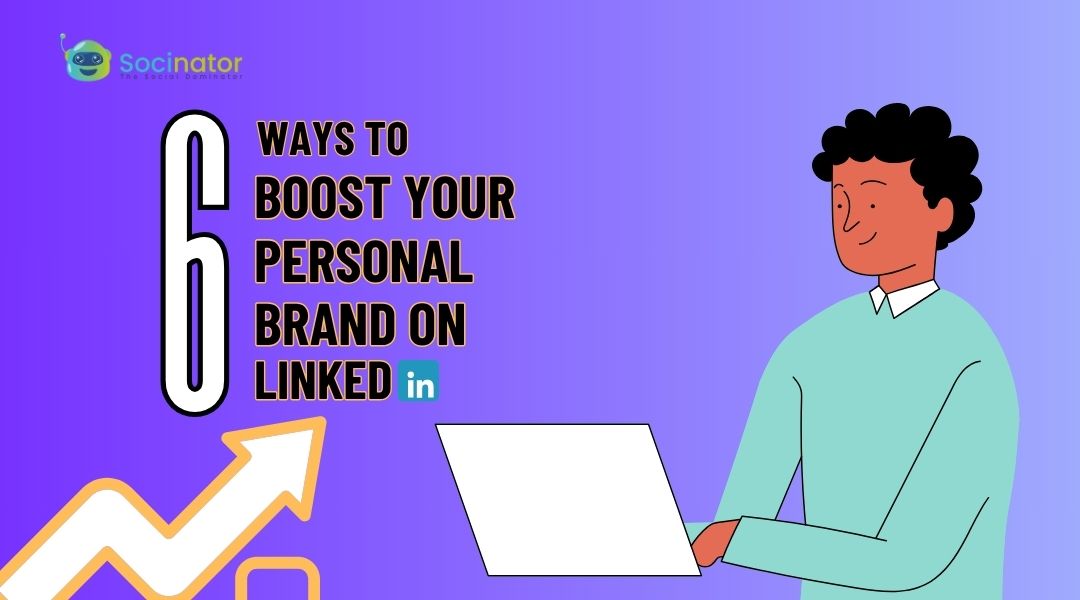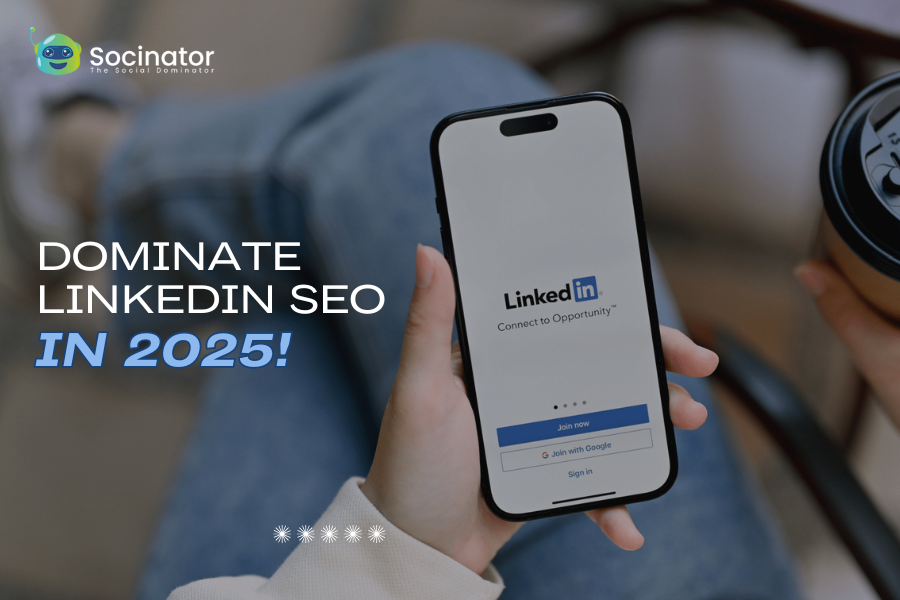In today’s world of B2B competition, having solid marketing strategies is crucial for businesses to succeed. LinkedIn is notably significant among various digital platforms for connecting with professionals, generating leads, and establishing authority within industries.
With over 1 billion users worldwide, with more people joining at a rate of three new members every second. LinkedIn presents unmatched opportunities for B2B marketers to expand their reach and achieve meaningful business results.
In this blog, we’ll explore effective strategies, we’ll delve into practical tactics and proven best practices. This will help you make the most out of LinkedIn marketing for B2B. It will take your efforts to the next level.
In a hurry? Listen to the blog instead!
What Is LinkedIn Marketing?
LinkedIn marketing involves utilizing the platform to connect with professionals and accomplish marketing goals. It involves leveraging a range of features and tools provided by LinkedIn to reach a desired audience, enhance brand visibility, generate leads, and facilitate conversions. This encompasses both organic and paid marketing approaches, such as content marketing, advertising, networking, and lead generation.
LinkedIn marketing aims to reach professional audiences with advanced targeting options and business-focused features to accomplish marketing objectives and foster business growth.
Why To Use LinkedIn Marketing For B2B?
LinkedIn marketing for B2B companies holds significant importance due to several key factors:
Professional Audience:
LinkedIn boasts a user base composed primarily of professionals, including decision-makers, executives, and industry experts. This professional audience aligns well with the target demographic of B2B businesses, making LinkedIn an ideal platform for reaching potential clients and partners.
Networking Opportunities:
LinkedIn offers powerful networking capabilities, allowing B2B marketers to connect with relevant individuals and organizations within their industry. This networking potential enables businesses to expand their reach, forge valuable partnerships, and cultivate meaningful relationships that lead to new opportunities and collaborations.
Thought Leadership:
Establishing thought leadership is essential in the B2B sector, where credibility and expertise are primary factors in decision-making processes. LinkedIn provides a platform for B2B companies to share valuable insights, industry knowledge, and best practices, positioning them as authorities within their niche. By consistently delivering high-quality content and engaging in industry discussions, businesses can build trust and credibility among their target audience.
Targeted Advertising:
This platform offers sophisticated targeting options that allow B2B marketers to reach specific segments of their target audience. With features such as job title targeting, company size targeting, and industry targeting, businesses can tailor their advertising campaigns to reach decision-makers and influencers who are most likely to be interested in their products or services.
Content Distribution:
LinkedIn offers a platform for B2B companies to distribute content such as blog posts, whitepapers, case studies, and infographics to a targeted audience. Businesses can attract prospects, drive engagement, and establish themselves as trusted advisors in their industry by sharing valuable content that addresses the challenges of their target audience.
Lead Generation:
It provides various LinkedIn marketing tools and features developed to facilitate lead generation for B2B companies. From lead generation forms to sponsored content and InMail campaigns, businesses can capture leads directly on the platform and nurture them through the sales funnel. LinkedIn’s extensive user data and targeting capabilities make it an effective channel for generating high-quality leads that are more likely to convert into customers.
LinkedIn marketing for B2B companies presents unparalleled opportunities to connect with their target audience, establish thought leadership, generate leads, and drive business growth.
How To Use LinkedIn For Business Marketing?
Using LinkedIn for business marketing can be highly effective, especially for B2B (business-to-business) marketing. Here’s a step-by-step guide on how to leverage LinkedIn for marketing your business:
Optimize Your LinkedIn Profile:
- Ensure your company’s LinkedIn profile is complete and up-to-date with a clear description of your business, logo, cover image, and contact information.
- Use relevant keywords in your profile to improve search visibility.
- Encourage employees to link their profiles to the company page.
Create Engaging Content:
- Share valuable content such as articles, blog posts, case studies, and industry news relevant to your target audience.
- Utilize multimedia content like videos, infographics, and SlideShare presentations to make your posts more engaging.
- Post consistently to stay top-of-mind with your audience.
Engage with Your Network:
- Engage with your connections’ posts by liking, commenting, and sharing.
- Respond promptly to comments on your posts to foster conversations.
- Join relevant LinkedIn groups related to your industry and participate in discussions.
Utilize LinkedIn Company Pages:
- Regularly update your company page with news, product updates, events, and job openings.
- Showcase your products/services and company culture through multimedia content.
- Encourage followers to engage with your content by asking questions or seeking their opinions.
Leverage LinkedIn Advertising:
- Use LinkedIn Ads to target specific demographics, job titles, industries, or companies.
- Experiment with different ad formats like sponsored content, sponsored InMail, or text ads.
- Monitor the performance of your ads and adjust your targeting and messaging accordingly.
Build Relationships with Prospects:
- Use LinkedIn’s advanced search feature to find and connect with potential prospects.
- Personalize connection requests with a brief message explaining why you want to connect.
- Nurture relationships with prospects by regularly engaging with their content and sharing valuable insights.
Create and Join LinkedIn Groups:
- Create your LinkedIn group around a topic relevant to your industry or target audience.
- Participate in existing groups to establish yourself as an authority in your field and expand your network.
- Share valuable content and engage in discussions to build relationships with group members.
Measure and Analyze Your Results:
- Use LinkedIn Analytics to track the performance of your posts, company page, and advertising campaigns.
- Analyze metrics such as engagement rate, click-through rate, and follower growth to understand what content resonates with your audience.
- Use insights from analytics to refine your marketing strategy and optimize future campaigns.
By following these steps and consistently engaging with your audience on LinkedIn, you can effectively market your business and generate leads on the platform.
LinkedIn Audience Demographics –
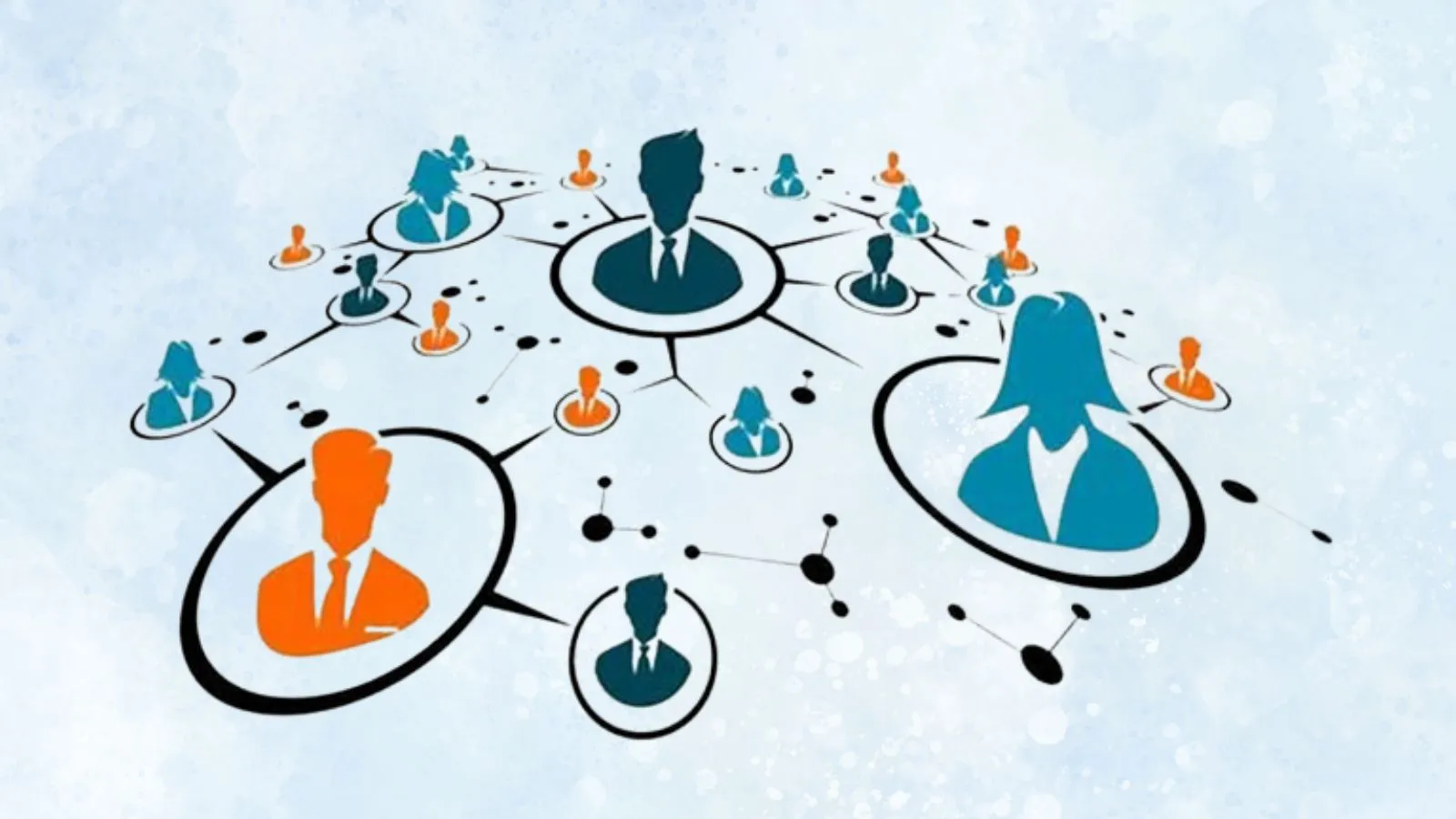 LinkedIn’s user base is diverse, encompassing professionals and businesses from various demographics. Here’s an overview of LinkedIn demographics based on available data:
LinkedIn’s user base is diverse, encompassing professionals and businesses from various demographics. Here’s an overview of LinkedIn demographics based on available data:
Age Distribution:
LinkedIn’s user base spans different age groups, but it is more popular among older demographics compared to platforms like Instagram or Snapchat.
The primary portion of LinkedIn’s user base falls in the 25 to 34 age range, closely followed by those aged 35 to 54.
Gender:
LinkedIn’s user base demonstrates a fairly even distribution across genders, albeit with a slightly greater representation of males. Nevertheless, this gender gap has been steadily closing over time. The platform’s appeal extends across diverse professional sectors and backgrounds, embracing individuals from all walks of life, irrespective of gender.
Also Read:
LinkedIn Marketing: 05 Reasons Unlock Your Professional Potential
LinkedIn: The Modernistic Marketing & Lead Generation Tool
Education and Employment:
LinkedIn users typically have a focus on career advancement and professional development. Many users are either actively employed, seeking new job opportunities, or are self-employed entrepreneurs. Additionally, a significant portion of users may also be students or recent graduates looking to establish their professional networks, seek internships, or explore job prospects. As a result, LinkedIn serves as a platform for connecting with like-minded professionals, accessing job listings, sharing industry insights, and fostering career growth.
Geographic Distribution:
LinkedIn has a global user base, with significant numbers in regions such as North America, Europe, and Asia-Pacific.
The platform’s popularity varies by country, with the United States, India, China, Brazil, and the United Kingdom being some of the largest user bases.
Industry and Job Function:
LinkedIn’s user base is diverse in terms of industry and job function, encompassing professionals from sectors such as technology, finance, healthcare, marketing, and more.
Users include employees, entrepreneurs, business owners, freelancers, job seekers, recruiters, and industry influencers.
Income Level:
LinkedIn users typically have higher income levels compared to the general population. Many users are professionals, executives, and business owners, which often correlates with higher earnings. This demographic makes LinkedIn an attractive platform for businesses offering high-end products or services, as well as for professionals seeking career advancement opportunities and networking with peers in similar income brackets.
Strategies For LinkedIn Marketing For B2B:
Here are some effective strategies for LinkedIn marketing for B2B businesses:
Targeted Content: Craft and share valuable content tailored to effectively tackle the struggles and obstacles encountered by your target audience. Tailor content to different stages of the buyer’s journey, ensuring relevance and usefulness at every step.
Thought Leadership: Position your company and key personnel as thought leaders in your industry by sharing insightful articles, participating in discussions, and offering expert opinions. Showcase your expertise through LinkedIn articles, presentations, and videos to build credibility and trust.
LinkedIn Ads: Utilize LinkedIn’s advertising platform to reach decision-makers and influencers within your target companies. Experiment with different ad formats and precise targeting options based on job titles, industries, and company size to maximize the effectiveness of your campaigns.
Engagement and networking: Actively engage with your audience by commenting on their posts, sharing valuable insights, and offering assistance. Join relevant LinkedIn groups to connect with peers and potential clients, and encourage employee advocacy by empowering your team to share company updates and content with their networks.
Performance Analysis: Regularly analyze performance metrics such as engagement rates, click-through rates, and conversion rates to gauge the effectiveness of your LinkedIn marketing efforts. Use data-driven insights to refine your targeting, messaging, and content strategy for continuous improvement.
By implementing these strategies effectively, businesses can leverage LinkedIn marketing for B2B as a powerful platform for lead generation and relationship building within their target industries. You can also use social media automation tools like Socinator to manage your LinkedIn marketing for B2B business without much effort. It can help you streamline your outreach efforts, increase efficiency, and connect with potential clients and partners within your target industry.
Socinator – The Social Dominator
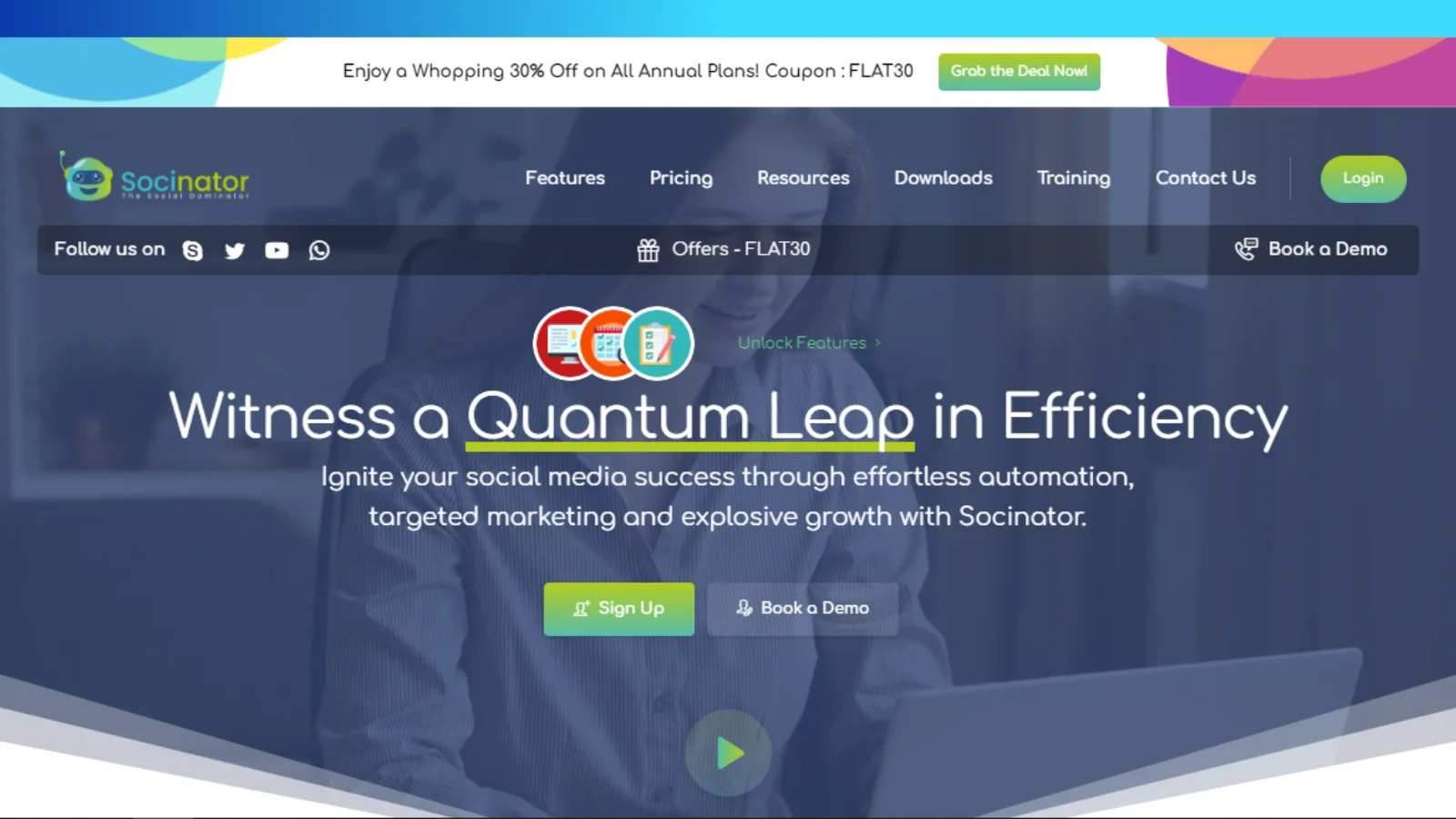 Socinator is a social media management and automation tool that helps users manage and grow their presence across various social media platforms, including LinkedIn, Facebook, Twitter, Instagram, Pinterest, and YouTube. It offers a range of features designed to streamline social media marketing efforts, automate repetitive tasks, and enhance engagement with followers. Socinator can be a valuable tool for LinkedIn marketing for B2B space.
Socinator is a social media management and automation tool that helps users manage and grow their presence across various social media platforms, including LinkedIn, Facebook, Twitter, Instagram, Pinterest, and YouTube. It offers a range of features designed to streamline social media marketing efforts, automate repetitive tasks, and enhance engagement with followers. Socinator can be a valuable tool for LinkedIn marketing for B2B space.
Here’s how you can utilize Socinator for effective LinkedIn marketing:
Auto Accept/ Send Connection Requests:
Use Socinator to automatically send personalized connection requests to relevant prospects in your target industry or niche or accept them. It helps expand your network with potential B2B clients or partners.
Auto post content in groups:
Enhance your lead targeting strategy by automating content posting in your LinkedIn groups. Take advantage of the auto-post feature to effortlessly distribute your content and boost your reach. Broaden your influence by strategically scheduling content in recently identified and relevant groups uncovered through Socinator. You can automatically join or leave those groups.
Automated Engagement:
Engage with your LinkedIn connections by automating likes, comments, and shares on their posts. It helps foster relationships with prospects, clients, and industry peers, establishing your credibility and authority in the B2B space.
Lead Generation:
Socinator offers valuable assistance in B2B lead generation by automating profile visits and message sending to targeted prospects. Craft personalized messages offering value or solutions tailored to their needs to initiate conversations and nurture leads.
Personalized Messaging and Community Engagement Automation:
Establish pre-written messages & automatically send them to your audience’s DMs when you want to interact with them. Additionally, it enables the scheduling of responses to messages from your community without difficulty.
By leveraging Socinator for LinkedIn marketing for B2B you can streamline your outreach efforts, increase efficiency, and effectively connect with and convert potential clients and partners within your target industry.
Conclusion:
LinkedIn marketing for B2B is indispensable due to its professional audience, networking capabilities, and targeted advertising options. To effectively leverage LinkedIn, optimize your profile, create engaging content, engage with your network, and utilize company pages.
Key strategies for LinkedIn marketing for B2B include creating targeted content, positioning your company as a thought leader, utilizing LinkedIn ads, engaging with your network, and analyzing performance metrics to refine your approach continually. Additionally, automation tools like Socinator can streamline your LinkedIn marketing efforts, saving time and effort while maximizing results.
With the right strategies and tools in place, businesses can harness the power of LinkedIn to achieve their marketing objectives and stay ahead in today’s competitive B2B landscape.

